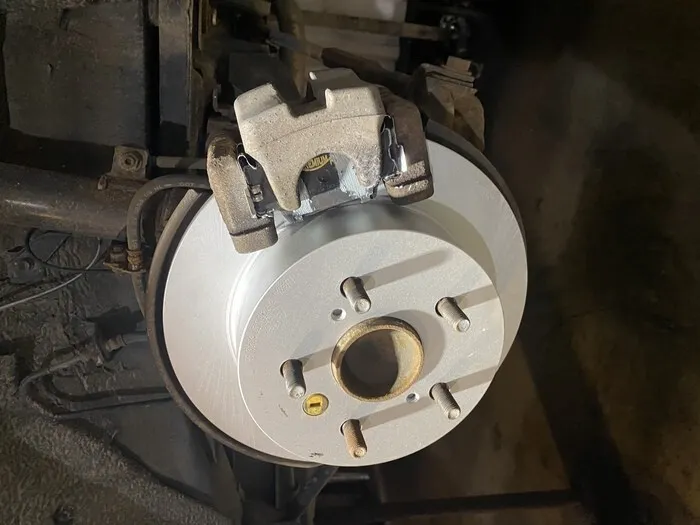What happens if I put new brake pads on bad rotors.
March 15, 2024Condition of your braking system is principal for safety. Many car owners may wonder what would happen if they install new brake pads on old, worn-out rotors. Let's delve into this topic with a comprehensive list of facts to understand the potential consequences.
-
Decreased Braking Performance: Installing new brake pads on worn rotors can lead to decreased braking performance. Worn rotors lack the necessary surface area and smoothness for optimal contact with the brake pads. As a result, the braking system may not be as responsive or effective, compromising overall safety.
-
Uneven Pad Wear: Worn rotors often have grooves, scoring, or uneven surfaces due to prolonged use. When new brake pads are installed on such rotors, they are more likely to wear unevenly. This uneven wear not only reduces the longevity of the brake pads but also affects braking consistency and stability.
-
Increased Noise and Vibration: Mismatched brake pads and rotors can generate increased noise and vibration during braking. The irregular surface of worn rotors can cause the brake pads to vibrate or chatter, resulting in annoying noises such as squealing, grinding, or thumping. These noises not only indicate potential safety issues but also contribute to driver discomfort.
-
Risk of Overheating: Worn rotors have diminished thermal capacity and heat dissipation capabilities compared to their newer counterparts. Installing new brake pads on such rotors may increase the risk of overheating during prolonged or aggressive braking. Overheating can lead to brake fade, reduced stopping power, and even brake system failure, posing significant safety hazards.
-
Accelerated Pad and Rotor Wear: Mismatched brake pads and rotors can accelerate the wear and tear of both components. The uneven contact between the brake pads and worn rotors can lead to accelerated pad degradation and rotor thinning. This not only necessitates more frequent replacements but also incurs higher maintenance costs in the long run.
-
Potential Damage to Brake Components: In extreme cases, installing new brake pads on severely worn rotors can result in damage to other brake components. Excessive friction between mismatched parts may cause caliper damage, brake fluid contamination, or even brake system failure. Such damage not only compromises safety but also requires extensive repairs to rectify.
Installing new brake pads on worn rotors may seem like a quick fix, but it can have detrimental effects on your vehicle's braking performance, safety, and longevity. To ensure optimal braking efficiency and safety, it's essential to replace both brake pads and rotors if either component shows signs of wear or damage. By prioritizing proper maintenance and timely replacements, you can uphold the integrity of your vehicle's braking system and enjoy peace of mind on the road.


